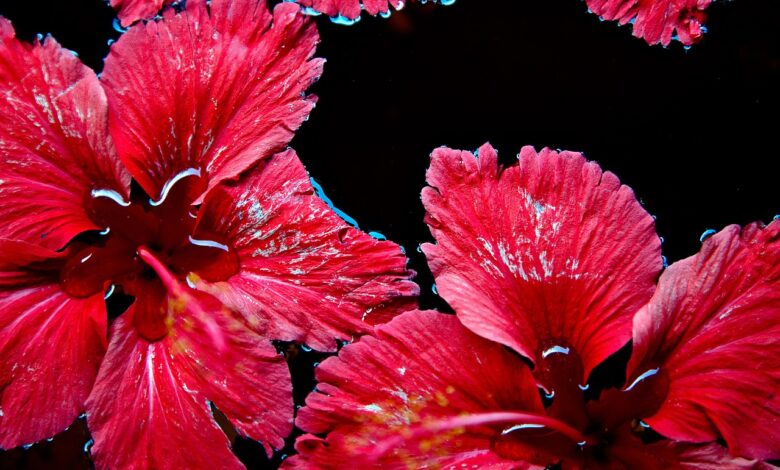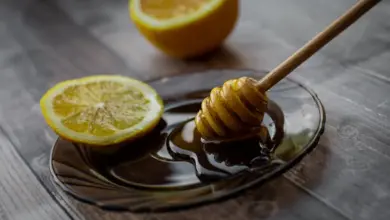
Hibiscus, often referred to as the “botox plant,” has been revered for its beauty-enhancing properties across various cultures for centuries. This vibrant flower, known for its striking color and delicate petals, is packed with powerful antioxidants, vitamins, and organic acids, making it a superb ingredient for skincare. This comprehensive guide explores the myriad benefits of hibiscus for the skin and offers practical ways to incorporate it into your skincare routine for a radiant, youthful complexion.
Nutritional Composition of Hibiscus
Hibiscus is rich in vital nutrients that are beneficial for the skin. It contains a high concentration of antioxidants, particularly anthocyanins, which are responsible for its deep red hue. Additionally, hibiscus is a source of alpha-hydroxy acids (AHAs), vitamin C, and a variety of essential minerals. These components work synergistically to nourish, protect, and rejuvenate the skin.
Benefits of Hibiscus for the Skin
Anti-Aging Properties
One of the most celebrated benefits of hibiscus for the skin is its anti-aging effects. The antioxidants in hibiscus, such as anthocyanins, combat free radicals that cause premature aging. These antioxidants help reduce the appearance of fine lines and wrinkles, promoting a smoother, more youthful complexion. Moreover, the natural AHAs in hibiscus gently exfoliate the skin, increasing cell turnover and improving skin elasticity.
Natural Exfoliation
Hibiscus contains natural AHAs, which provide gentle exfoliation without the harshness of synthetic chemical exfoliants. These acids help to remove dead skin cells, unclog pores, and encourage the regeneration of new skin cells. Regular exfoliation with hibiscus can result in a brighter, more even skin tone and smoother texture.
Moisturizing and Hydrating
Hibiscus is known for its high mucilage content, a sticky substance that helps the plant retain water. This mucilage provides deep hydration to the skin, locking in moisture and preventing dryness. The hydrating properties of hibiscus make it an excellent ingredient for those with dry or dehydrated skin, leaving the skin soft, supple, and radiant.
Evens Skin Tone
The organic acids in hibiscus, such as citric and malic acids, have a mild bleaching effect, which can help to lighten dark spots and hyperpigmentation. These acids also promote a more even skin tone by breaking down and removing dead skin cells. Regular use of hibiscus-based skincare products can lead to a clearer, more uniform complexion.
Firms and Lifts the Skin
Hibiscus is often referred to as the “natural botox” because of its ability to firm and lift the skin. The flower’s rich antioxidant content helps to maintain skin elasticity and provide a tightening effect, reducing the sagging of the skin and giving it a firmer appearance. This natural firming effect makes hibiscus an excellent ingredient for anti-aging skincare routines.
Anti-Inflammatory and Soothing
Hibiscus possesses anti-inflammatory properties that can help to soothe irritated skin and reduce redness. This makes it beneficial for those with sensitive or acne-prone skin. The soothing properties of hibiscus can help to calm conditions such as rosacea, eczema, and minor skin irritations, providing relief and improving the overall appearance of the skin.
How to Use Hibiscus for Skin Care
Hibiscus Face Mask
Ingredients:
- 2 tablespoons of dried hibiscus petals or hibiscus powder
- 1 tablespoon of honey
- 1 tablespoon of yogurt or aloe vera gel
Instructions:
- Grind the dried hibiscus petals into a fine powder if using whole petals.
- Mix the hibiscus powder with honey and yogurt/aloe vera gel to form a smooth paste.
- Apply the mask to your face, avoiding the eye area.
- Leave it on for 15-20 minutes.
- Rinse off with lukewarm water, gently massaging in circular motions.
- Pat your face dry with a clean towel and apply a moisturizer.
Hibiscus Toner
Ingredients:
- 1 cup of water
- 2 tablespoons of dried hibiscus petals
- 1 tablespoon of witch hazel (optional)
Instructions:
- Boil the water and add the dried hibiscus petals.
- Let it steep for 10-15 minutes, then strain the liquid to remove the petals.
- Allow the hibiscus infusion to cool, then add witch hazel if desired.
- Transfer the mixture to a spray bottle or a jar.
- Apply the toner to your face using a cotton pad or by spritzing directly onto the skin.
- Follow with your regular moisturizer.
Hibiscus Scrub
Ingredients:
- 2 tablespoons of dried hibiscus petals or hibiscus powder
- 1 tablespoon of sugar
- 1 tablespoon of coconut oil or olive oil
Instructions:
- Grind the dried hibiscus petals into a fine powder if using whole petals.
- Mix the hibiscus powder with sugar and coconut/olive oil to form a scrub.
- Gently massage the scrub onto damp skin in circular motions.
- Rinse off with lukewarm water.
- Pat your skin dry and apply a moisturizer.
Hibiscus Infused Oil
Ingredients:
- 1 cup of carrier oil (such as jojoba, almond, or olive oil)
- 1/2 cup of dried hibiscus petals
Instructions:
- Place the dried hibiscus petals in a clean, dry jar.
- Pour the carrier oil over the petals, ensuring they are fully submerged.
- Seal the jar and place it in a sunny spot for 2-4 weeks, shaking it occasionally.
- Strain the oil to remove the petals.
- Use the hibiscus-infused oil as a facial oil, massage oil, or add it to your skincare products.
Hibiscus is a powerful natural ingredient that offers a multitude of benefits for the skin. From its anti-aging and exfoliating properties to its ability to hydrate, even out skin tone, and firm the skin, hibiscus is a versatile addition to any skincare routine. Whether you choose to use it in masks, toners, scrubs, or oils, incorporating hibiscus into your skincare regimen can help you achieve a healthier, more radiant complexion. Embrace the beauty secrets of this vibrant flower and experience the transformative effects of hibiscus on your skin.

